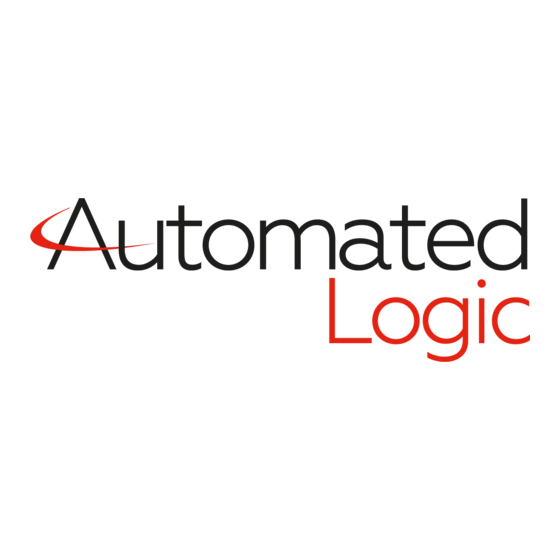
Table of Contents
Advertisement
R683 (RLM v4.7)
Technical Instructions
Introduction .................................................................................................. 2
Specifications ............................................................................................... 2
Mounting ....................................................................................................... 3
Power Wiring ............................................................................................... 3
Procedure .............................................................................................. 3
Addressing & Baud Rates ............................................................................ 4
Procedure .............................................................................................. 4
Setting the Module's Address ............................................................... 4
Setting the CMnet Baud Rate ............................................................... 4
CMnet Communication Wiring .................................................................... 5
Zone Sensor Wiring ..................................................................................... 5
Standard Zone Sensor .......................................................................... 5
Enhanced Zone Sensor ......................................................................... 5
Using the Enhanced Zone Sensor .............................................................. 6
Local Setpoint Adjust ............................................................................ 6
Timed Local Override ........................................................................... 6
Occupancy Indication ........................................................................... 6
Local Access ................................................................................................ 7
Universal Inputs ........................................................................................... 9
Procedure .............................................................................................. 9
Custom Translation Tables ....................................................................... 10
Procedure ............................................................................................ 10
Analog Outputs .......................................................................................... 11
Procedure ............................................................................................ 11
Digital Outputs ............................................................................................ 11
Procedure ............................................................................................ 11
Checkout & Troubleshooting .................................................................... 11
Manually Formatting the Module ............................................................. 12
LEDs ............................................................................................................ 12
Identification ........................................................................................ 12
LED Power-up Sequence .................................................................... 12
Transferring Memory ................................................................................. 13
Fuses ........................................................................................................... 13
Production Date ......................................................................................... 13
Module Drivers ........................................................................................... 14
Parameter Page .................................................................................. 14
Status Page .......................................................................................... 14
Channel Numbers ...................................................................................... 15
Modstat page .............................................................................................. 16
Rev. (30-JAN-98) • RLM v4.7
Contents
1
© 1995-98 Automated Logic Corporation
Advertisement
Table of Contents

Subscribe to Our Youtube Channel
Summary of Contents for Automated Logic R683
-
Page 1: Table Of Contents
Transferring Memory ................. 13 Fuses ......................13 Production Date ..................13 Module Drivers ................... 14 Parameter Page .................. 14 Status Page ..................14 Channel Numbers ..................15 Modstat page ....................16 Rev. (30-JAN-98) • RLM v4.7 © 1995-98 Automated Logic Corporation... -
Page 2: Introduction
Digital Outputs: 6 relay outputs (Form A), 3 A max. analog outputs. Analog Outputs: 3 analog outputs (0-10 VDC), The R683 module is a member of the I/O Hardware family 20 mA source capability. of control modules. Each module is capable of stand- Communication: EIA-485 port for CMnet alone operation. -
Page 3: Mounting
Figure 2: Mounting R683 Module Inside a NEMA 3R Type Enclosure Software: Requires RLM module driver. Panel Mounting: To mount the R683 module directly to a surface, the Fault Detection: Hardware watchdog timer. NEMA 3R flanges must be removed. These flanges are designed to be broken off along the perforation. -
Page 4: Addressing & Baud Rates
When the switch is in memory to the module as described later in this the OFF position, the R683 has a baud rate of 9600 bps. document to turn this LED off. When the switch is in the ON position, the module has a baud rate of 38.4k bps. -
Page 5: Cmnet Communication Wiring
Turn the module's power switch OFF. For input 1 (UI 1), connect the zone sensor wires to WIRE pins 1 and 2 on the 8-pin receptacle on the R683 module see Figure 5. Turn the module's power switch back ON. -
Page 6: Using The Enhanced Zone Sensor
Local Override Switch, or an telephone override. NOTE: Pins 4 and 7 must be connected to utilize the Figure 8: Enhanced Zone Sensor Connection occupancy indicator. Rev. (30-JAN-98) • RLM v4.7 © 1995-98 Automated Logic Corporation... -
Page 7: Local Access
N I4 8 5 C a b l e R 6 8 3 H e a d The R683 allows you to connect a computer to the A L C ACCESS p a r t n o . ACCESS port or the ZONE port. You can connect to the... - Page 8 Figure 12: R683 I/O Connections Rev. (30-JAN-98) • RLM v4.7 © 1995-98 Automated Logic Corporation...
-
Page 9: Universal Inputs
Universal Inputs NOTE: For ALC room sensors, place a 10 V, 1 W Zener The R683 provides eight universal inputs which are diode (1N4740A) in series with the sensor (as shown in wired as shown in Figure 12. These inputs are jumper Figure 10). -
Page 10: Custom Translation Tables
Provided on the parameter page of the Note that the slidepot input values (see Figure 15, R683 module driver (see Parameter Page) are two user right column) are defined with a setpoint-bias rather definable tables for translating these inputs. -
Page 11: Analog Outputs
Enhance Zone Sensor port must be equal to 4.7k Ohms. The minimum range for the slidepot on The R683 has six digital outputs which can be connected the setpoint adjust input must be equal to 5k Ohms. to a maximum of 24 Volts AC/DC (see Figures 12). The... -
Page 12: Manually Formatting The Module
Turn the R683's power switch OFF. Transmit - lights when the R683 transmits data to the Set all eight of the R683's address and baud rate dip CMnet or access port. switches to the ON position (see Figure 1 for location). -
Page 13: Transferring Memory
The “Run” LED will begin its normal operation Fuses (rapid flashing). The R683 module is protected by two (2) 0.5 A pico fuses NOTE: The "Error" LED will stay OFF unless an error is on the CMnet (+) and (-) terminals and one (1) 3.0 A pico encountered or memory has not been transferred, in which fuse on the 24 VAC power terminal. -
Page 14: Module Drivers
0:00 mm:ss T r e n d i n g I n f o r m a t i o n : Chan Trending Interval Samples Rev. (30-JAN-98) • RLM v4.7 © 1995-98 Automated Logic Corporation... -
Page 15: Channel Numbers
† Degrees Celsius can only be displayed in SVW 1.1 or later when the GFB is made in Eikon 2.0 or later with the "METRIC=TRUE" command set in the alc.ini file. Rev. (30-JAN-98) • RLM v4.7 © 1995-98 Automated Logic Corporation... -
Page 16: Modstat Page
Any non-zero value here will have a "ERROR-Xxxxx" or "WARNING-Xxxxx" message at the top of the screen to explain the nature of the error. Rev. (30-JAN-98) • RLM v4.7 © 1995-98 Automated Logic Corporation...





Need help?
Do you have a question about the R683 and is the answer not in the manual?
Questions and answers